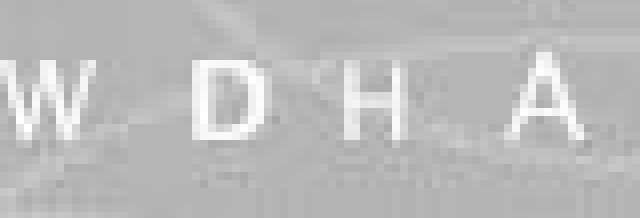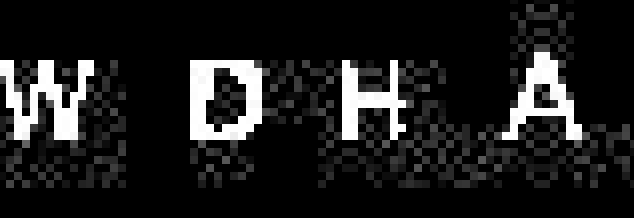Python入門:PIL之驗證碼破解
環境介紹
1、當前檔案的路徑是:/Users/frankslg/PycharmProjects/cjb/ver/ver_code1.py
2、而存放圖片的路徑是:/Users/frankslg/PycharmProjects/cjb/img/*.jpeg
3、os.getcwd()
Out[3]: ‘/Users/frankslg/PycharmProjects/cjb’
程式碼實現
#ver_code1.py
from PIL import Image
import pytesseract
import os
def convert(pic_path,pic):
#先將圖片進行灰度處理,也就是處理成單色,然後進行下一步單色對比 執行效果
原圖:

灰度圖:

清除噪點後的圖:

注:這裡要說明一點,清除噪點後的圖是白底黑字,還是黑底白字就看噪點處理程式碼中大於噪點時使用的是1還是0
程式碼執行後的結果:
WDHA
參考資料
In[18]: help(Image.open(pic,’r’).convert)
Help on method convert in module PIL.Image:
convert(mode=None, matrix=None, dither=None, palette=0, colors=256) method of PIL.JpegImagePlugin.JpegImageFile instance
Returns a converted copy of this image. For the “P” mode, this
method translates pixels through the palette. If mode is
omitted, a mode is chosen so that all information in the image
and the palette can be represented without a palette.
The current version supports all possible conversions between
"L", "RGB" and "CMYK." The **matrix** argument only supports "L"
and "RGB".
When translating a color image to black and white (mode "L"),
the library uses the ITU-R 601-2 luma transform::
L = R * 299/1000 + G * 587/1000 + B * 114/1000
The default method of converting a greyscale ("L") or "RGB"
image into a bilevel (mode "1") image uses Floyd-Steinberg
dither to approximate the original image luminosity levels. If
dither is NONE, all non-zero values are set to 255 (white). To
use other thresholds, use the :py:meth:`~PIL.Image.Image.point`
method.
:param mode: The requested mode. See: :ref:`concept-modes`.
:param matrix: An optional conversion matrix. If given, this
should be 4- or 12-tuple containing floating point values.
:param dither: Dithering method, used when converting from
mode "RGB" to "P" or from "RGB" or "L" to "1".
Available methods are NONE or FLOYDSTEINBERG (default).
:param palette: Palette to use when converting from mode "RGB"
to "P". Available palettes are WEB or ADAPTIVE.
:param colors: Number of colors to use for the ADAPTIVE palette.
Defaults to 256.
:rtype: :py:class:`~PIL.Image.Image`
:returns: An :py:class:`~PIL.Image.Image` object.
In[10]: help(im.point)
Help on method point in module PIL.Image:
point(lut, mode=None) method of PIL.JpegImagePlugin.JpegImageFile instance
Maps this image through a lookup table or function.
:param lut: A lookup table, containing 256 (or 65336 if
self.mode=="I" and mode == "L") values per band in the
image. A function can be used instead, it should take a
single argument. The function is called once for each
possible pixel value, and the resulting table is applied to
all bands of the image.
:param mode: Output mode (default is same as input). In the
current version, this can only be used if the source image
has mode "L" or "P", and the output has mode "1" or the
source image mode is "I" and the output mode is "L".
:returns: An :py:class:`~PIL.Image.Image` object.
In[16]: help(pytesseract.image_to_string)
Help on function image_to_string in module pytesseract.pytesseract:
image_to_string(image, lang=None, boxes=False, config=None)
Runs tesseract on the specified image. First, the image is written to disk,
and then the tesseract command is run on the image. Resseract’s result is
read, and the temporary files are erased.
also supports boxes and config.
if boxes=True
"batch.nochop makebox" gets added to the tesseract call
if config is set, the config gets appended to the command.
ex: config="-psm 6"
